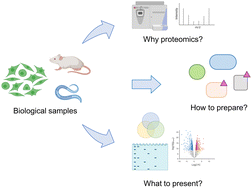Finding a vocation for validation: taking proteomics beyond association and location
Abstract
First established in the seventies, proteomics, chemoproteomics, and most recently, spatial/proximity-proteomics technologies have empowered researchers with new capabilities to illuminate cellular communication networks that govern sophisticated decision-making processes. With an ever-growing inventory of these advanced proteomics tools, the onus is upon the researchers to understand their individual advantages and limitations, such that we can ensure rigorous implementation and conclusions derived from critical data interpretations backed up by orthogonal series of functional validations. This perspective—based on the authors’ experience in applying varied proteomics workflows in complex living models—underlines key book-keeping considerations, comparing and contrasting most-commonly-deployed modern proteomics profiling technologies. We hope this article stimulates thoughts among expert users and equips new-comers with practical knowhow of what has become an indispensable tool in chemical biology, drug discovery, and broader life-science investigations.

- This article is part of the themed collection: Chemical Proteomics


 Please wait while we load your content...
Please wait while we load your content...